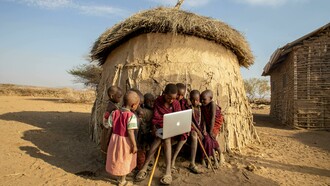Writing precisely 2 years before India’s annexation of Kashmir on August 5, 2019, the grandniece of India’s founding father, Prime Minister Jawaharlal Nehru, Nayantara Sahgal, wrote presciently in The Guardian on August 5, 2017 that “another partition (of India) stares us in the face”. She accused the ruling party of Prime Minister Modi of “dividing India once again into Hindus and others, as the RSS wants to make the country a Hindu State”. And she concluded that “we are rapidly marching towards a horrifying future”.
It is now clear that the “horrifying future” that Nehru’s grandniece talked about two years earlier is there in the form of annexation of Kashmir by Prime Minister Modi’s India, which may turn out to be a blunder of Himalayan proportions unleashing consequences which cannot be controlled.
After the annexation of Kashmir, which has led to an unprecedented curfew for 60 straight days, it is clear that perhaps Prime Minister Modi has bitten off more than he can chew by spawning a crisis that is hitting at the heart of the Indian State, transforming its very character of a secular, pluralist polity into a sectarian state.
Consider the consequences of this decision of August 5, 2019:
- The Kashmir annexation has divided India on political and communal lines that can have negative implications for Indian national cohesion and domestic stability;
- Kashmir issue has been internationalized in a manner that was never done in the recent past, with wholesale condemnation of this decision from Beijing to Brussels;
- The Kashmir Dispute has been discussed for the first time in the UN Security Council since the 1998, when India and Pakistan went nuclear. Then the UN Security Council, on June 6, 1998, passed a unanimous resolution, # 1172, referring to Kashmir by name: ‘’Urges India and Pakistan to resume dialogue between them on all outstanding issues... and encourages them to find mutually acceptable solutions that address the root causes of those tensions, including Kashmir”;
- India’s move has galvanized separatists within India ranging from the Nagas in the Northeast who are now setting new pre-conditions in their talks with New Delhi, for example, seeking their “separate flag and constitution” as part of broader autonomy within the Indian Union, while the Sikhs are actively campaigning for an Independence Referendum in 2020;
- The United States, a close ally of India’s, has for the first time in the last few years, not only distanced itself from India’s aggressive rhetoric but President Trump has also refused to endorse India’s perspective on Pakistan.
- China has been alienated since China, like Pakistan and the Kashmiri people, is now directly a party to the Kashmir Dispute because of India’s action to partition Kashmir and declaring Laddakh, bordering China, a Union Territory, resulting in China’s Foreign Ministry calling it an ‘unacceptable’ decision. It was, therefore, not surprising that high-powered Chinese Military Delegation that visited Pakistan on August 26, included the People’s Liberation Army commander for ‘southern Tibet’, the area on the Chinese side bordering India.
- The worst possible consequences have been within Kashmir where resistance to repression has been rising, with an unprecedented curfew and complete lockdown, complete cutoff of all communication. 6000 Kashmiris have been arrested without any charges and sent outside Kashmir to jails in India, with even the United Nations Secretary General and the US State Department expressing concern and seeking a return to normalcy with the restoration of the Kashmiris civic and political rights.
The tensions in South Asia should also be viewed in the context of the emerging global scenario where the balance of economic and political power is shifting from the West to the East. The 21st Century is an “Asian Century”, particularly China’s transition from a regional to a global power. And there are makings of a New Cold War with the US National Security Strategy of 2018 terming China and Russia as a “more serious threat than Al Qaeda or ISIS”. The Kashmir crisis could also lay the basis of a brewing Cold War pitching China-backed Pakistan against India, which would endeavour to seek US support.
Given this context, Pakistan is seeking to pursue a multi-pronged strategy which includes moral support for all Kashmiris plus close coordination with China and the rest of the international community. Other actions include protest demonstrations and legal action.
Criticism of this move is also evident on the legal and media front. A recent example is the legal initiative taken by Kashmiri-American in an American court of law. A law suit against the Indian Prime Minister was filed in a Houston court under a Federal American statute, Torture Victim Protection Act of 1991, on September 19, 2019. This statute allows civil suits on US soil against foreign officials who have violated Human Rights.
On the media front, an example of criticism of India of this move is the scathing article by Indian writer Arundhati Roy’s in The New York Times of August 15, 2019, “Silence is the Loudest Sound” which says:
- India’s annexation of Kashmir has a “distinct whiff of colonialism in the air”;
- ‘RSS is the State’ in today’s India, referring to the extremist wing of the ruling party;
- ‘An Architecture of India fascism is quickly being put in place’ by India’s ruling party;
- “There has not been a single year since 1947 when the Indian Army has not been deployed within India’s borders against its ‘own people’. The list is long: Kashmir, Mizoram, Nagaland, Manipur, Hyderabad, Assam”.
To meet this new situation, Pakistan’s diplomacy has moved with alacrity. Luckily, Pakistan has got strategic space to pursue the Kashmir case for the next couple of years due to changes in the regional scenario providing Pakistan with a ‘breather’:
- Thanks to Pakistan’s timely ‘course correction’ on the flawed Afghan policy of the past, reinforced by a clampdown on domestic extremism and militancy, Pakistan will no longer be caught in a ‘nutcracker’ like situation facing adversaries both on the Western (Afghanistan) and Eastern borders (India).
- President Trump has linked his re-election in 2020 with the Afghan peace process in which Pakistan’s role is pivotal, hence, he feels that the road to the White House lies through Pakistan. Sooner than later, the Afghan peace talks, a prospect that seems likely now with the arrival in Islamabad on October 2 of both the US Special Envoy Zalmay Khalilzad, and the Afghan Taliban delegation, hopefully, Pakistan seeking to broker these peace talks.
- The Pakistan-China alliance will be further cemented following the upcoming visit of Pakistan Prime Minister Imran Khan to China on October 8.
- With the Persian Gulf in turmoil and tensions between Iran and Saudi Arabia, the last thing the International Community will want is a conflict between the two South Asian nuclear Neighbours. That leaves Pakistan with greater room to manoeuvre regionally.
After India’s annexation of Kashmir, the future course of events will depend on three factors. First, while the Indian attempt is to seek a semblance of ‘normalcy’ through the use or threat of use of force, with almost a million men under arms trying to enforce the annexation as a fait accompli. The Kashmiri determination to resist the new status quo is undeterred by any kind of force and it will certainly supersede India’s ‘might is right’ approach as historically and morally ‘right is might’.
Second, Pakistan has resolved to sustain a long term strategy of supporting the Kashmiri people so that the status quo, which is untenable and unacceptable to the Kashmiri people, is changed. Third, the China factor would be key in any strategy as China, being Pakistan’s strategic partner, provides Pakistan an entry into the international system, especially the UN Security Council, the G-20 and the Nuclear Suppliers Group.
China’s leadership role in world affairs is a plus for Pakistan, as Beijing has made the successful transition from a regional force to a global powerhouse. As Chinese Foreign Minister, Wang Yi stated on March 18, 2019 during his meeting with his Pakistani counterpart: “no matter how things change in the world and the region, China will firmly support Pakistan in upholding its sovereignty, independence and territorial integrity and dignity”.
The China factor is also pivotal for two reasons in the context of Kashmir. China’s voice matters in the councils of power globally and when China speaks for Kashmir, that voice is heard loud and clear. An assertive China now has a global voice that resonates in key world capitals. As President Xi Jinping told the Communist Party Congress in Beijing on October 18, 2017 that “China has now become a great power in the world and it is time for us take centre stage in the world and to make a greater contribution to humankind.”
The other factor is China’s growing military might, which was on display during the massive October 1, 2019 Chinese National Day military parade in Beijing, which shows that China now has the military prowess as well as the political will and the economic clout to pursue its interests in the region and the world. A key component of those interests is China’s strategic partnership with Pakistan which, as China’s Foreign Ministry spokesman said on September 24, 2019, is “unbreakable”.
History teaches us that military might cannot crush a people’s will to be free. Vietnam, Afghanistan, racist South Africa and America’s own experience of ‘shock and awe’ in the post 9/11 period are instructive examples of failures of force to subjugate a people determined to resist. On August 5, India used a tried, tested and failed formula, deploying 900,000 armed men to browbeat 8 million defenceless but resilient and defiant Kashmiris. It was assumed, like the Americans did in Iraq in 2003, that it would be a ‘cakewalk’! As events since August 5 have demonstrated, history follows a different course.















